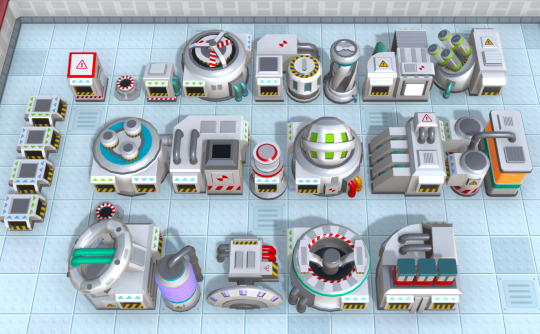#cheap data packages
Explore tagged Tumblr posts
Note
Hii!! I just am getting out of high school and since I am in a graphic design class and do art, my economics teacher suggested that I start selling my work and doing commissions. I know that your art isn't the same as that but I was wondering if you had any suggestions of how to get started is the art sphere? Like which platforms should I advertise my art one? The biggest one I have seen is Instagram and Tiktok but I am hesitant to use either cause of Instagram using your posts as AI training data and Tiktok being video content, which i am not interested in. Any input is appreciated!
Hi Hiiii!
Even though my art isn't 1:1 to this I do have some experience and thoughts about getting started. Graphic design (my profession) and Illustration/art (my hobby) are two very different spheres though, so I'll break down a couple thoughts on each. For graphic design, any kind of client work is going to start to get you ahead and also get you thinking about what kind of work you like doing/want to get paid to do. Since soooo many things fall under the umbrella of graphic design (packaging, logos, websites, events, branding, motion, marketing, etc etc etc) starting to make real things and figuring out how the elements all work together is super important. You don't have to be able to do everything, but showing and knowing which areas you can help a team with will be great for getting those initial internships and junior designer positions. This could look like anything from designing logos for family and friends, to making up a pretend coffee shop and designing what the cups and signs and instagram feed might look like all together. Maybe design a website or two. Have fun and get it posted to a portfolio website (there are a lot of free options). The more things you finish, the better your portfolio will get, and the more you will know. Done is better than perfect. Get scrappy. For illustration, my experience is mostly with social posting and convention stuff. Draw as much as you can all the time, fill your sketchbooks with fun and bad and ugly art that you enjoy making to get in the habit and get loose. Then just like for graphic design, work on finishing stuff. The more you finish, the more you'll figure out your process to finish things. Done > Perfect once again. Post wherever you want (i also dont like tiktok bc i dont make video/motion stuff, and i mostly just use insta for keeping other artists' contacts - i probably only post about 10% of what i make there, but it is a nice one to have.) From there, start offering cheap commissions or requests to get used to working with other people's ideas (I think i started with $5 sketches that i could do in 10ish minutes back in 2011). I don't do public commissions anymore, but I did for many, many years and making sure you're smart with your time is a big tip (its why the sketch/lines/full color + halfbody/fullbody character price sheets are so popular. An artist offering these knows about how long it takes them to draw each combination and sets their price accordingly, more time = more money). As for selling at stuff like conventions or art shows, start small! See if you can get space at a small local fair or art market! Make and sell 10 finished things. Don't set your heights on the biggest, most competitive stuff right off the bat, or try to manage inventory for 100 items. That can all come later.
The "art sphere" is kind of a crazy place, and there are infinite ways to approach getting started. You do you. These tips are mostly targeted at career-style advice, but plenty of people are just here to have fun, and it really is way easier to keep the passion alive when you're making/expressing stuff for just yourself - balance work and play!! The only thing we all have in common is a love for making things!
Good luck out there, and have fun!
#asks#im actually really bad at socials/social strategy tbqh#most my success comes from the fact that ive been posting since 2011 and have hundreds and hundreds of posts tied to this user#but the only time i post consistently is in the depths of a hyperfix#but all thats because this is a hobby#not my job#i do graphic design for ft work because i like making things so much and need to eat#but i do keep it separate from illustrations and comics#which are for more self-expression/destress than anything else#i hope some of this helps and is what you were looking for!
41 notes
·
View notes
Text
useful information: How to get a USB Blu-Ray player to work on your computer
Not a post about vintage technology, just an explanation of what you think might be simple to do but isn't: There are Blu-Ray players that plug into your computer by USB, and you discover that just plugging it in doesn't make it work* in the same manner that CD-RWs or DVD-RWs are automatically recognised and function. You will see "BR Drive" in My Computer and the name of whatever movie you have inserted, but that's as far as you're able to go.

*There is software you can buy to make a Blu-Ray (internal or external) function, sure, and if an internal came with your computer it's likely already installed -- but if you're like me you don't have that software, you're cheap and won't pay for software, and you want to use what you have installed already or find free solutions.
Looking in the Blu-Ray drive's package, there's not a lot of info about what you're supposed to do. The above no-name Blu-Ray player cost $40 from a popular website; name-brand ones can set you back $120 or so. Looking around online for those instructions, I never saw the whole set of directions in one place, I had to cobble them together from 2 or 3 sites. And so here I share that list. To keep out of trouble, I'm not linking any files -- Google will help you.
Get VLC, the free video player available for pretty much any operating system. Thing is, it doesn't come with the internals to make it work with Blu-Ray even if when you go to the Play Media menu there is a radio button for selecting Blu-Ray.
Get MakeMKV, a decoder for reading Blu-Ray disks. This had been totally free during the beta testing period but it's come out and has a month or two trial period you can work in.
Get Java if you don't already have it. Reason for this is, the menu systems on Blu-Ray disks uses this... technically it's not required, however it does mean you don't have options such as special features, language and sound changes, or scene selection if you don't have Java installed; insert a disk, it can only play the movie.
Get the file libaacs.dll online so you have AACS decoding. I am told it hasn't been updated in awhile so there may be disks produced after 2013 that won't work right, but you won't know until you try.
There's a set of keys you will also want to have so that the player knows how to work with specific disks, and so do a search online for the "FindVUK Online Database". There will be a regularly-updated keydb.cfg archive file on that page to pick up.
Got those three programs installed and the other two files obtained? Okay, here are your instructions for assembly...
In VLC: go to Tools, Prefs, click "show all"… under the Input/Codecs heading is Access Modules then Blu-Ray: Select your region, A through C. You can change this if you need to for foreign disks. Next related action: go to My Computer and C:, click into Program Files and VLC, and this is where you copy the libaacs.dll file to.
In MakeMKV: click View, then Preferences, and under Integration - add VLC.
Confirm that Java is set up to work with VLC by going to the computer's Control Panel, going to System Properties, and into Environment Variables. Click System Variables, and click New to create this key if it doesn't already exist: … Name: Java … Value: [the location of the Java 'jre#.##' folder... use Browse to find it in C:\Program Files\Java]
Let's go back into My Computer and C:, this time go to Program Data, and then do a right-click in the window and select New and Folder. Rename this folder "aacs" (without the quotes), and then you click into it and copy the keydb.cfg file here.
REBOOT.
And now you should be able to recognise Blu-Ray disks in your player and play them. Three troubleshooting notes to offer in VLC:
"Disk corrupt" -- this means MakeMKV has not decoded and parsed the disk yet, or that you don't have the libaacs.dll in place so that it can decode the disk. ...After checking the VLC folder for the DLL to make sure, launch MakeMKV, then go to File, Play Disk, and select the Blu-Ray drive. Now it will grind a bit and figure out the disk's contents.
A note appears when a movie starts saying there will be no menus, but the movie plays fine -- Java isn't running. ...Invoke Java by going to the Java Settings in Start: Programs. You don't have to change anything here, so Exit, then eject the disk and put it back in to see if the movie's menu now appears.
Buffering between chapters, making the movie pause for a few seconds? There is a setting for this but I need to find that info page again for where that is. (If you find it, tell me where it is!)
I don't claim to know a lot but if you have any questions I might have some answers or suggestions. So far I've watched "Office Space" and Disney's "Coco" without any issues beside occasional buffering.
87 notes
·
View notes
Text









Hi i want to talk about my all time favorite camera 📸
pls ignore all my grammar mistakes, i’m not professional reviewer 😂 i just wanna talk about this camera.
This is the Sony RX1Rii, this is the third and “most recent” version of this camera. i put “most recent” in quotes because this camera is almost 10 years old. don’t like the old age fool you because this camera can keep up with the newest cameras in its niche.
This little point and shoot sports a 42mp full frame sensor. YES, F U L L F R A M E!! This tiny camera is actually smaller than all the x100 series (minus the lens on it). The camera has an incredibly sharp Zeiss Sonnar 35mm f2 glued to. This camera has 399 af points, with eye AF. The camera is incredibly fast and accurate!! the camera is pretty much a tiny packaged Sony A7Rii!
One of my favorite features of this camera is the pop-up EVF! This is a feature that was added to only this version of the camera and it’s a feature that i wish sony continued to incorporate into some of their other smaller cameras like the A7c or a6k series!

The camera does shoot video up to 1080 120fps, but does not have picture profiles such has S-log or HLG. This was a camera made strictly for photos, which is probably for the best because the battery life on this camera is terrible, any kind of prolong video shooting would absolutely burn through these batteries in minutes.
That brings me to my next point, my cons. There’s not many but i figured i’d point them out anyways for those who are interested in this camera. these aren’t make it or break it cons, these are just issues that hinder it from being the greatest camera ever released (IMO)
1) battery life, i believe it’s rated for like 220 shots. Ive definitely gotten it to last twice than that. That tiny body processing all that data on some of the tiniest batteries makes sense why it’s so bad. Luckily batteries are cheap and like i said they’re tiny, so they’re pretty easy to carry around!
2) no picture profiles in video. i know i touched on it briefly up above and this camera is mainly a photo camera AAAAAND hybrid cameras were just beginning to grow in popularity around the time this camera came out but it would’ve been amazing to have s-log in this camera for little snippets here and there. i know at the time IG and other photo sharing apps were mainly photo sharing apps, and a camera that was built strictly for photo has no business having usable picture profiles in video.
3) no crop mode in RAW. this one is weird to me because i know the A7Rii has an APS-C mode where you can shoot RAW photos with an inbody crop and there’s times that i’d love to shoot something at 50mm (35mm + sony’s 1.5x aps-c crop). there is a digital zoom option but that’s for jpg only.
4) PRICE!!!! why the fuck is this camera still being sold for $3200??!! this is a 10 year old camera with outdated tech. i bought mine used for $1900 (which is about the price of the fuji x100V at the time of purchase) and i still think that’s a little too much.
that’s really about it aside from minor complaints of not having tele/ wide converters. i’m also sure all of those cons stem from the small battery. I’d love to see all of these corrected in a Mk3 one day, but as of a couple weeks ago sony just discontinued the Rx1rii’s production. I’m being a little hopeful but maybe that means we’re getting a successor, i doubt it but a boy can dream.
I don’t really do reviews or anything but this camera has had my heart for the past 9 months so i had to show it off/ talk about it. this to me in the perfect everyday camera. it never leaves my side and comes with me to any and every trip! Im always blown away by the photos i create with this little camera and i know whenever a mk3 comes out im going to hop on the chance to buy on immediately!
#Sony#Rx1rii#sony rx1#fujifilm#fujifilm x100v#fuji x100v#x100v#fuji x100vi#x100vi#lookslikefilm#original photographers#photographers on tumblr#new tumblr#artists on tumblr#photogram#35mm#photography#film#point and shoot#point and click#reviews#tumblr
65 notes
·
View notes
Text
Does McLaren exceed the cost cap?
In the course of this year, the McLaren car has been updated from a midfield car to the arguably fastest car on the grid, being able to build a twenty second gap to Verstappen in a RedBull and keep all the other teams that have shown to have a race winning pace behind. Shortly after the win in Zandvoort, Zak Brown revealed that they would bring even more updates for the car in Monza. Quite a few people are confused by this, and ask for McLaren to be investigated on their monetary spend, because people think that they have already exceeded the cost cap, but I want to share my thoughts on McLarens financial situation.
I am not quite sure how people think the teams work the cost cap, but generally we can assume that the administration of the finances works the following;
First of all, there are certain amounts that teams are aware of from the beginning of the year on. This includes the wages, equipment and the base car that they build at the beginning of the year (important here; base car, excluding updates and crashes). This part makes up the biggest portion of the cost cap, and although teams can save here a bit by not employing as many people, teams that work well will try to stay with similar numbers here.
Second of all, there are expected expenses. Crashes, faulty parts that need replacement, ect. These things can only be predicted and not be guessed as accurately as the fixed costs which is why teams can lose or win most in this category.
Last but not least, there is everything that they have left, such as updates, making spare parts, ect. While teams will also have an estimated amount for these expenses, they are dependent on the expected expenses, and by this, McLarens seemingly financial freedom can be explained.
McLaren has been very lucky this year. Every single one of their updates work, so there is no wasted money there, but they have more money left than probably expected. Why? Their drivers are pretty cheap. While driver wages do not fall into the cost cap, any expenses made by crashes do. McLaren hasn’t mentioned it, but for RedBull the opposite is the case; in the past few years, they didn’t lose as much in crashes; in 2023, they lost estimated $3.5 million, in 2022 only estimated $1.6 million.This season though,they’ve already lost an estimated $4.5 million and we still have nine races left. Important is to keep in mind that these amounts are only estimated, but Dr. Helmut Marko himself said that especially Perez’ crash in Monaco is dangerous for their cost cap, and although I usually do not necessarily think he tells the truth at all times, this does make sense. It’s been discussed by multiple sources that RedBull has probably planned less for crashes this season and had thus to cut back on possible updates.
McLaren on the other hand, has most likely more money left than expected. With only nine races left, they have only had to spend an estimated $1 million on crashes. They won’t use all of their funds of predicted damages for updates, but winning the constructors championship would be of incredible performance for McLaren.
Furthermore, different than RedBull, not only did all of their updates work, but they also have had less than RedBull. While RedBull has had to try their hardest to make their car drivable again, thus bringing rushed updates almost every race week, McLaren has only had updates in three races. These were bigger packages, but they were also better planned and worked so well that they did not lose any money having to redo them.
In the end, these are mostly guesses though, but I am fairly positive that all teams try their hardest to stay below the cost cap. I guess, the reason McLaren finds themselves under scrutiny, is that people quickly make up things because they dislike the team and others just read it and believe it, so as usually, I don’t expect, nor do I want, anyone from just believing my thoughts without any questioning. Look at the data, read the official FIA regulations and think about what is logical yourself, without just listening to others. Sapere aude and all that.
#mclaren f1#mclaren#f1#formula 1#f1 2024#red bull racing#oracle red bull racing#red bull#oscar piastri#lando norris#max verstappen#sergio perez#ferrari f1#charles leclerc#lewis hamilton#this turned into enlightenment talk#because too many people especially on twitter are being stupid#wheeltalk
22 notes
·
View notes
Text
AL Warship classes
ok I reckon this will be my last long pure conjecture post for the AL. But here we go! Ship classes (Tyler isn’t even a real person and I can tell he is salivating over reading this list lol)
Struck through vessel classes indicate they are out of service.
Terran Cutter Class picket ship: the original 6 man AL vessel. Huge amounts of these were mothballed after the end of the Terra-Trask war due to a radical shift in TDF doctrine away from Quantity over quality. The AL were effectively given the ships, as the mothball maintenance costs on the TDF were huge. These ships were taken to shipyards orbiting Trask, and given full refits to A: better accommodate their beretreskan crews, and B: receive modernization packages. This vessels had a prodigious service history, with the last one only being removed from frontline service in AL:75. Further Aurora labs upgrade packages means that some hulls still see use as specialist SIGINT, Reconnaissance, and repair craft. 2 base models still in service with the Aurora Legion Memorial Flight.
Kysshakk Class frigate: One of two classes of non AL frigates to serve with the legion, these ships hailed from Trask’s Orbital dockyards, where they had been sitting due to the end of naval conscription. These ships would operate in pairs, and would very rarely not fly with Cutter class vessels, or even later Longbow MK.1s. One remains in service with the ALMF, one is a parts hulk, and the other 4 vessels were lost in the line of duty.
Terran Indomitable Class Destroyer: These were the heavy weapons of the early legion. They exclusively operated Anti-Piracy missions, and even after the introduction of the Stream System, did not carry brains or faces aboard. These were warships, and were the spearpoint of the legion. Multiple times, pirate fleets were noticed fleeing immediately upon the appearance of an Indomitable class in AL colors, due to the reputation these vessels carried. Last vessel retired in AL:90 after a policy ship away from military might.
Terran Dreadnaught Class light Cruiser: These were the weapons of last resort for the legion, only being deployed to combat upstart pirate kings or large scale terrorist organizations. These were officially the only vessels to ever use nuclear warheads while flying under AL colors, during the Centarian succession crisis of AL:80. These vessels remained in service until the Battle of Orion, where the last vessel was destroyed by a Warbreed vessel ID’d as the Andarael.
Titan Class Battleship: The Original flagship of the legion, the Titan class, known as the Indefatigable, was 1.2km of weapons and fighters, but also of Medbays and machine shops and refugee accommodation. She was retrofitted through AL:10, retaining her punching power but also adding facilities for humanitarian aid. She became a Hospital Ship, a Refugee Transport, A battleship, and a Symbol. She was lost in Black ‘63 along with admiral Nari Kim while responding to a Terran colony distress call. Later review of the data after The battle of Orion ID’d the fleet she fought as a Syldrathi Hunter killer fleet.
Long Bow MK.1: The first internally produced AL vessel, the Long Bow MK.1 took all the lessons learn from the Cutter Class and made them into a truely formidable foe. Widely considered to be one of the greatest Naval craft of its Era, the longbow MK.1 was versatile, easy to repair, cheap to produce, punchy, and survivable. In the few outright wars the AL participated in, 9 times out of ten, a total loss of a longbow would have 0 casualties. Quite often downed squads would be issued a new vessel within the week, and the shortest turnaround was Squad 926, who were downed, and flew their next combat sortie 1.5 hours later, a record that stands to this day. Depending on the mission, Longbows were fitted with extra medical equipment, extra armor, more weapons, external cargo pods, and even on rare occasions, a Orbital drop pod for Spec ops. Multiple serving with the ALMF, Aurora Labs as test beds, and Several serving with [DATA REDACTED].
Longbow MK.2: If the MK.1 was one of the best of its time, the MK.2 was THE best. The already famous ease of repair was augmented by auto repair systems, the reactor was uprated, and engine output was increased by 25%. A Longbow MK.2 currently holds the all time speed record (with out gravity assists) of a production vessel at 16% the speed of light. Currently still in active frontline service, though being phased out for the MK.3
Polearm MK.1: the first Frigate to come out of Aurora Yards, the Polearms are designed to fill the roles of the Kysshakk class Frigates, the Indomitable Class destroyers, and Mercy class Hospital ships (not discussed here). Manned by 6 squads, they are stuffed to the gills with the finest tech Aurora Yards could “Borrow” from Aurora Labs. Most of the ship is designed to be swapped out depending on the mission, so everything from fleet defense to hauling is possible. One vessel during the Terra-Syldra War scored a total of 50 victories against Other vessels, and was officially bestowed the honor of the Flagship of AL Group 4.
Blockhouse MK.1 Carrier: Aurora Yards first foray into Capital class ships, The Blockhouse is designed to remain at the back of fleets and provide overwhelming fighter support. Capable of carrying no less than 50 Wraith class Fleet defense fighters, it is the spaceborne equivalent of a wasp nest. And Like any good wasps nest, it has a Queen. Generally a heavily modified cutter class, though recently some have been deployed with Longbow MK.3s with Speical equipment packages, the queen acts as a traffic controller, shuttle, and SWACS (Spaceborne warning and control ship) all in one. On more peaceful missions, the phantom bays are swapped out for launch tube for Hospitaller class aid shuttles and Kindness class orbital supply pods.
Longbow MK.3: the Pinnacle of Aurora yards shipbuilding, the MK.3 is stronger, faster, and hardier than the MK.2. Most electronics have been hardened against electromagnetic interference, hauling capacity has been increased, and fuel burn has been reduced. The auto repair systems have been upgraded to the level where anything besides the reactor can be repaired given enough time. Most functions can be swapped by mission modules, allowing for extra hauling capacity, increased firepower, or even extra speed. Production halted after AL:150 due to resource constraints. Next vessel expected AL:156.
Iron Cannon Class cruisers: a much rarer ship, built from the same basic design as the Blockhouses, but with the fighter wings and control craft replaced with anti vessel railguns and torpedo launchers. These craft are mean lean killing machines, and do not carry faces or brains aboard. They are the spiritual successor to the Dreadnaughts, and inherit the same naming scheme of their ancestors. First three were the Dreadnaught, the Inflexible, and the Formidable. Having seen service at the tail end of the Terra-Syldra war, they maintained a kill ratio of 5:1. Notably, no one of these vessels was seized by the Rahaam, though 3 were lost when their captains overloaded their reactors rather than risk capture and assimilation.
Gladius Class Gunboat: Built from the stripped down hulls of Longbow MK.1s, the Gladius class is the first new class of vessel commissioned by the legion since AL:150. Due to manpower shortages across the legion, these vessels are designed to operate with only 4 crew, with empty positions filled with advanced automated systems. Due to these limitations, these vessels only serve humanitarian missions, and are never used on the front lines unless desperately needed. Due to glaring shortfalls in overall effectiveness, the class is slated for retirement by AL:160.
[Admin Credentials Accepted, Welcome Founder_03]
Longbow MK.4: Equipped with experimental AL manufacture Pulse Cannons, Beretreskan plasma drives, and the finest ballistic grade titanium composite plating the Legion can build, the MK.4 is the crème de la crème of legion ship building. In simulated combat, 3 MK.4s can defeat Iron cannon class Cruisers, 50x their displacement. When these vessels reach mass production and issue, it will represent the largest jump in AL fleet capabilities since the introduction of the MK.1. Current low rate production estimates suggest it will be AL:158 before non spec ops squads are issued the MK.4.
Special Project 274, Codename “Brannock”: The Hulk of TDF carrier Kusanagi was recovered in exceptional condition after it was found in late AL:181. The hulk was then towed to site 00 and gutted. It was decided in AL:183 that the ship was to be converted into the newest flagship for the legion, the Brannock. Currently under development, most hangar bays are being replaced with railgun mounts, torpedo tubes, and in one case, the largest pulse cannon ever manufactured. She will be the red right hand of the legion, and instill a warning into the pirate fleets that ravage the galaxy: “We are coming. Run”
Special Project 275, Codename “Madran”: much like project 274, The Madran is built from a recovered ship hulk, this time the wreck of the original Indefatigable, recovered from an Unbroken salvage fleet circa AL:154. Currently undergoing extensive repair and upgrade, the Madran with be the kind smile of the legion. Almost all weaponry is being stripped, and replaced with further humanitarian facilities, to in effect become the single largest aid vessel in the galaxy. She is designed to be the sister ship to the Brannock, and will, when deployed alongside her, act as a huge Signal jamming and targeting vessel. Giving free rain for rail guns and pulse cannons to shred renegade syldrathi and pirate fleets
10 notes
·
View notes
Text
It's just like, damn man communication and getting info cost so much around 2000.
You wanna look up some information on the phone so you can call someone that isn't in your phone book? That's like $4 in modern money.
You wanna call your aunt who lives a couple of states away and you're not paying the extra monthly landline cost for unlimited long distance? $15 in modern money for a 10 minute call in daytime hours, still like $3 nights and weekends, and these are both like "you got a pretty good deal" cases. Worse for most people.
OK so you just want to call your buddy who moved like 25 miles away? Maybe it's free cuz you lucked into still being in the same local call zone, but maybe you're still paying $3 in modern money for a 10 minute conversation because you managed to hit through two long distance zones. Especially if you're on opposite sides of a metro area or something. And if he had a cell phone you were calling, it might mean you paid even more because it registered as a further call.
But that's landline, let's say you were going cell. You might be paying the equivalent of $50 a month in modern money for 120 minutes of call time and no included texting. This service would likely charge you extra for "roaming", that is being out of your designated home calling area, as well as exceeding 120 minutes of talk time (and you would be billed a full minute minimum for any call that connected, mind), and texting once might be 75¢ in modern money on a cheaper provider, as much as $2 modern on others. Your excess call minutes might cost between 50¢ and $3 in modern money per minute and roaming calls would cost similar amounts even when you were within your plan. And on such a plan there was no cell data service so it would be an addon around $5 a month in modern money to have it at all - and prices of between 35¢ up to $5 in modern money per kilobyte transferred. Even if you were using strictly plain text that piled up quick.
You could of course move up to significantly more expensive plans per month in fixed costs to have much bigger pools of call minutes, freedom from roaming charges texts, and data. And to have significantly cheaper per-unit overage charges if you exceeded those. But that would quickly take your bill beyond $100, even $200 a month in modern money for a single line.
And of course if you wanted a couple songs from favorite singer? You ain't streaming it on a cheap monthly plan or likely even paying individually: your ass is paying nearly $38 in modern money for the whole album on CD, maybe $23 in modern money if you got a good sale price. And the artists still got a fraction of a penny off it cuz music royalties have been fucked forever. (of course you could pirate it probably... If you had internet service, if it was fast enough, if you could afford it for generally $36 a month in modern money for slow dialup, often much more if you had broadband available at all)
You wanna watch TV shows? Well like now you could watch the over the air stations for free. With tons of ads on the non-public stations ofc. But this is generally pre digital so there's much fewer stations on the air.
Or you could pay around $85 modern a month to get a pretty decent cable or satellite package and well you know, hope the time the shows you like line up with your schedule and of course it's full of ads too. Maybe you will setup a vcr or DVD recorder to catch what you couldn't be around for, and if you're not willing to wipe your old recording then you're going to need to drop serious cash to have fresh tapes and rewritable DVDs to keep that stuff around.
You want the higher end cable/satellite stuff? Well HBO alone back then was like $28 in modern money for a month on top of the rest of your bill - and most other similar no-ads premium channels were similar.
And let's not forget that this was still a time where getting official copies of shows on any kind of media often just Didn't Happen. Or they'd do it but they'd only put out random single episodes, maybe one full season on a multi season show. You might easily pay $26 in modern money for two half hour episodes or one full hour episode on a tape or DVD. Maybe you'd get lucky and instead be buying a whole season set for $75 in modern money, admittedly a much cheaper price per episode. Otherwise though, it's record it yourself in often pretty bad quality or trading and copying recordings from other people who liked that thing, if you got in touch with any.
And on-demand cable/satellite was just getting started and often required upgrading to a higher package, including paying more to rent a higher end TV box, with miniscule libraries. And the pay per view costs were often like $5 modern to watch a single movie squished to fit your TV, sometimes up to $35 modern for "new releases". Similarly, typical rental store costs were in the ball park of $7.50 to $30 in modern money per item, depending on overnight versus all week and sometimes old release vs new release. That shit added up quick! And Late fees could easily double up or triple up in just a few days.
And of course newspapers and magazines and books all cost money. We generally expect most of these to have some at least limited amount of free access on demand today, whether it's the free few articles a month before the paywall or getting free access digitally through your library. But of course back then, that's no such thing. A lot of online versions of publications were strict pay only, others only posted summaries for free, and that's if you were even online. It may not sound so bad to shell out 65¢ to $2 in modern money for a newspaper issue, or $4-$15 in modern money an issue for various magazines, but you'd be buying them pretty often if you wanted to keep up with things in more detail than they got into on TV. Even if you subscribe and get that discount for everything in a year, that's like maybe $90 a year in modern money for a major city paper, or $70 to $150 in modern money for a magazine depending on its frequency and size and content.
Shits just so fucking easy and cheap these days for real. You want to call someone you don't think about distance charges or roaming, you just fucking call. If you're calling overseas you probably use some app or program on a computer to call for free. A text message does not cost more than sending actual mail, it's nothing. Even all those stupid streaming services, which I don't use personally, you can have like 5 of those damn things, have way more to watch for less than cable back then, let alone modern cable prices, and have somewhat more reliability in what will be available next month!
Even when you're stuck on something like a strict budget, using prepaid cell service with blocks of minutes now, like some Tracfone "I only can afford $15 a month" stuff? It's like shlt at least that's 500 minutes/texts/megabytes of data. Like you're still getting screwed but it's much less so than what you got for that 10 or 20 or 25 years ago, and a lot more places have wifi you can use to stretch your data usage out.
27 notes
·
View notes
Text
In 2023, the fast-fashion giant Shein was everywhere. Crisscrossing the globe, airplanes ferried small packages of its ultra-cheap clothing from thousands of suppliers to tens of millions of customer mailboxes in 150 countries. Influencers’ “#sheinhaul” videos advertised the company’s trendy styles on social media, garnering billions of views.
At every step, data was created, collected, and analyzed. To manage all this information, the fast fashion industry has begun embracing emerging AI technologies. Shein uses proprietary machine-learning applications — essentially, pattern-identification algorithms — to measure customer preferences in real time and predict demand, which it then services with an ultra-fast supply chain.
As AI makes the business of churning out affordable, on-trend clothing faster than ever, Shein is among the brands under increasing pressure to become more sustainable, too. The company has pledged to reduce its carbon dioxide emissions by 25 percent by 2030 and achieve net-zero emissions no later than 2050.
But climate advocates and researchers say the company’s lightning-fast manufacturing practices and online-only business model are inherently emissions-heavy — and that the use of AI software to catalyze these operations could be cranking up its emissions. Those concerns were amplified by Shein’s third annual sustainability report, released late last month, which showed the company nearly doubled its carbon dioxide emissions between 2022 and 2023.
“AI enables fast fashion to become the ultra-fast fashion industry, Shein and Temu being the fore-leaders of this,” said Sage Lenier, the executive director of Sustainable and Just Future, a climate nonprofit. “They quite literally could not exist without AI.” (Temu is a rapidly rising ecommerce titan, with a marketplace of goods that rival Shein’s in variety, price, and sales.)
In the 12 years since Shein was founded, it has become known for its uniquely prolific manufacturing, which reportedly generated over $30 billion of revenue for the company in 2023. Although estimates vary, a new Shein design may take as little as 10 days to become a garment, and up to 10,000 items are added to the site each day. The company reportedly offers as many as 600,000 items for sale at any given time with an average price tag of roughly $10. (Shein declined to confirm or deny these reported numbers.) One market analysis found that 44 percent of Gen Zers in the United States buy at least one item from Shein every month.
That scale translates into massive environmental impacts. According to the company’s sustainability report, Shein emitted 16.7 million total metric tons of carbon dioxide in 2023 — more than what four coal power plants spew out in a year. The company has also come under fire for textile waste, high levels of microplastic pollution, and exploitative labor practices. According to the report, polyester — a synthetic textile known for shedding microplastics into the environment — makes up 76 percent of its total fabrics, and only 6 percent of that polyester is recycled.
And a recent investigation found that factory workers at Shein suppliers regularly work 75-hour weeks, over a year after the company pledged to improve working conditions within its supply chain. Although Shein’s sustainability report indicates that labor conditions are improving, it also shows that in third-party audits of over 3,000 suppliers and subcontractors, 71 percent received a score of C or lower on the company’s grade scale of A to E — mediocre at best.
Machine learning plays an important role in Shein’s business model. Although Peter Pernot-Day, Shein’s head of global strategy and corporate affairs, told Business Insider last August that AI was not central to its operations, he indicated otherwise during a presentation at a retail conference at the beginning of this year.
“We are using machine-learning technologies to accurately predict demand in a way that we think is cutting edge,” he said. Pernot-Day told the audience that all of Shein’s 5,400 suppliers have access to an AI software platform that gives them updates on customer preferences, and they change what they’re producing to match it in real time.
“This means we can produce very few copies of each garment,” he said. “It means we waste very little and have very little inventory waste.” On average, the company says it stocks between 100 to 200 copies of each item — a stark contrast with more conventional fast-fashion brands, which typically produce thousands of each item per season, and try to anticipate trends months in advance. Shein calls its model “on-demand,” while a technology analyst who spoke to Vox in 2021 called it “real-time” retail.
At the conference, Pernot-Day also indicated that the technology helps the company pick up on “micro trends” that customers want to wear. “We can detect that, and we can act on that in a way that I think we’ve really pioneered,” he said. A designer who filed a recent class action lawsuit in a New York District Court alleges that the company’s AI market analysis tools are used in an “industrial-scale scheme of systematic, digital copyright infringement of the work of small designers and artists,” that scrapes designs off the internet and sends them directly to factories for production.
In an emailed statement to Grist, a Shein spokesperson reiterated Peter Pernot-Day’s assertion that technology allows the company to reduce waste and increase efficiency and suggested that the company’s increased emissions in 2023 were attributable to booming business. “We do not see growth as antithetical to sustainability,” the spokesperson said.
An analysis of Shein’s sustainability report by the Business of Fashion, a trade publication, found that last year, the company’s emissions rose at almost double the rate of its revenue — making Shein the highest-emitting company in the fashion industry. By comparison, Zara’s emissions rose half as much as its revenue. For other industry titans, such as H&M and Nike, sales grew while emissions fell from the year before.
Shein’s emissions are especially high because of its reliance on air shipping, said Sheng Lu, a professor of fashion and apparel studies at the University of Delaware. “AI has wide applications in the fashion industry. It’s not necessarily that AI is bad,” Lu said. “The problem is the essence of Shein’s particular business model.”
Other major brands ship items overseas in bulk, prefer ocean shipping for its lower cost, and have suppliers and warehouses in a large number of countries, which cuts down on the distances that items need to travel to consumers.
According to the company’s sustainability report, 38 percent of Shein’s climate footprint comes from transportation between its facilities and to customers, and another 61 percent come from other parts of its supply chain. Although the company is based in Singapore and has suppliers in a handful of countries, the majority of its garments are produced in China and are mailed out by air in individually addressed packages to customers. In July, the company sent about 900,000 of these to the US every day.
Shein’s spokesperson told Grist that the company is developing a decarbonization road map to address the footprint of its supply chain. Recently, the company has increased the amount of inventory it stores in US warehouses, allowing it to offer American customers quicker delivery times, and increased its use of cargo ships, which are more carbon-efficient than cargo planes.
“Controlling the carbon emissions in the fashion industry is a really complex process,” Lu said, adding that many brands use AI to make their operations more efficient. “It really depends on how you use AI.”
There is research that indicates using certain AI technologies could help companies become more sustainable. “It’s the missing piece,” said Shahriar Akter, an associate dean of business and law at the University of Wollongong in Australia. In May, Akter and his colleagues published a study finding that when fast-fashion suppliers used AI data management software to comply with big brands’ sustainability goals, those companies were more profitable and emitted less. A key use of this technology, Atker says, is to closely monitor environmental impacts, such as pollution and emissions. “This kind of tracking was not available before AI-based tools,” he said.
Shein told Grist it does not use machine-learning data management software to track emissions, which is one of the uses of AI included in Akter’s study. But the company’s much-touted usage of machine-learning software to predict demand and reduce waste is another of the uses of AI included in the research.
Regardless, the company has a long way to go before meeting its goals. Grist calculated that the emissions Shein reportedly saved in 2023 — with measures such as providing its suppliers with solar panels and opting for ocean shipping — amounted to about 3 percent of the company’s total carbon emissions for the year.
Lenier, from Sustainable and Just Future, believes there is no ethical use of AI in the fast-fashion industry. She said that the largely unregulated technology allows brands to intensify their harmful impacts on workers and the environment. “The folks who work in fast-fashion factories are now under an incredible amount of pressure to turn out even more, even faster,” she said.
Lenier and Lu both believe that the key to a more sustainable fashion industry is convincing customers to buy less. Lu said if companies use AI to boost their sales without changing their unsustainable practices, their climate footprints will also grow accordingly. “It’s the overall effect of being able to offer more market-popular items and encourage consumers to purchase more than in the past,” he said. “Of course, the overall carbon impact will be higher.”
11 notes
·
View notes
Text
Data Glitch, Part 1
The flickering neon sign outside casts a sickly green glow across my chrome arm, highlighting the faint scratch marring its polished surface. I sit up in bed, the cheap synth-leather groaning beneath me. My apartment, a cramped box in the lower levels of Neo-Kyoto, smells faintly of ozone and stale ramen. Rain streaks down the grimy windowpane, mirroring the rivulets of sweat still clinging to my skin. The nightmare clings to me, the metallic tang of blood and the echoing screams still sharp in my memory. It was the usual; a chaotic blur of chrome and fire, punctuated by the relentless thrum of malfunctioning machinery and the distorted whispers of voices I couldn’t quite place. But this time… this time felt different. More real.

I am Synthia, a cyborg. Not one of the sleek, elite models paraded in the upper city’s chrome towers; no, I’m a patchwork creation, cobbled together from scavenged parts and salvaged technology. My left arm, a gleaming testament to advanced robotics, contrasts sharply with the scarred flesh of my right, a constant reminder of a past I can only partially recall. Even my memories feel fragmented, glitching like a faulty data stream. The hazy edges of my past are filled with flashes of violence, desperate escapes, and the chilling presence of a shadowy organization known only as "The Collective." They seem to be connected to the nightmares, somehow.
My apartment is spartan. A worn data pad sits on a chipped metal table, its screen displaying a blinking notification from "Kaito," my contact for odd jobs. Nothing glamorous, just the usual run of the mill; delivering packages through the city’s labyrinthine underbelly, maybe picking up some '…disposables’ for a less than savory clientele. Each successful delivery inches me closer to my goal: enough credits to finally afford a full body scan, maybe even enough to get my memories repaired. And then there's the deeper, unspoken question that gnaws at me. Why am I here? What is my purpose in this neon-drenched dystopia? What role do I play in the larger game?

The rain outside intensifies, drumming a rhythm against the window. I push myself from the bed, the cold metal of the frame a stark contrast to the warmth of my flesh. The city awaits, with its glittering promises and its lurking dangers.
The damp chill of Neo-Kyoto’s back alleys bites at my exposed skin as I step out of my apartment building. My usual attire – worn leather jacket, patched jeans, and boots sturdy enough to withstand the city’s uneven pavements – feels inadequate against the relentless downpour. The air vibrates with the low hum of hovercars and the distant, rhythmic clang of the city's recycling plants. I pull my hood tighter, the faint scent of ozone and industrial waste filling my nostrils. The streets are already teeming with life: hustlers, scavengers, and the occasional corporate drone hurrying past, their faces obscured by glowing data-visors. I check my data pad; Kaito has sent another message, a simple instruction: “Meet me at the Serpent’s Tooth. Usual time.” The Serpent’s Tooth is a seedy bar nestled deep within the city's underbelly, a place where shadows dance in the corners and deals are brokered in hushed whispers.
Reaching the bar, I push through the swinging doors, the cacophony of raucous laughter, clinking glasses, and the low thrum of synth-music washing over me. The air is thick with smoke and the cloying sweetness of cheap synth-ale. Kaito sits alone in a dimly lit corner booth, his back to the entrance. He's a tall, gaunt man, his face etched with the weariness of a life lived on the city’s fringes. His eyes, however, hold a sharp intelligence that belies his appearance. He doesn't look up as I approach, his long fingers drumming a steady rhythm on the table.
"Synthia," he says without turning, his voice a low rumble. "The package is ready. It's a delicate one this time. Special delivery. High risk, but, as you know, high reward." He slides a small, unmarked data-chip across the table towards me. "Don't ask questions. Just deliver it and get out. You know the place?" He finally looks up at me, his expression unreadable. The glint of something cold and calculating flashes in his eyes for a moment before he casually returns to his drink, leaving me alone with the weight of the mysterious mission in my hands. The rain continues outside, mirroring the uncertain weather of the city itself and my own internal turbulence.

My fingers brush against the cool, smooth surface of the data chip. Kaito’s casual demeanor belies the obvious danger inherent in this delivery. He trusts me, implicitly, yet the very act of trusting me hints at something more significant than a simple transaction. Curiosity, a dangerous thing in this city, overrides my better judgment. The risk is significant, but the potential reward—understanding the true nature of this mission, perhaps even glimpsing more of my own obscured past—is too enticing to ignore.
I discreetly slip the chip into a hidden pocket within my jacket, careful to avoid the watchful eyes of the other patrons. Exiting the Serpent’s Tooth, I melt into the anonymity of the rain-slicked streets. Finding a relatively secluded alcove beneath a flickering holographic advertisement, I retrieve the chip and plug it into a small, portable data reader I keep hidden amongst my other tools. The screen flickers to life, displaying a series of encrypted files. My skills in decryption aren't top-tier, but they're sufficient for tasks like this.
With a sigh, I begin the tedious process of cracking the encryption, each line of code a tiny piece of a larger puzzle. The rain continues, a steady drumming soundtrack to my silent work. As the encryption yields, a wave of unease washes over me. The files reveal a complex network of transfers, shell corporations, and encrypted communications involving individuals and locations I recognize from the fragmented memories that haunt my sleep. The names, dates, and locations are not just a collection of unrelated information, however; they form a pattern, a disturbingly cohesive whole.

It’s more than just a simple delivery; this chip holds the key to unraveling a much larger conspiracy. And I am now, inextricably, involved. The rain stops as suddenly as it began, and a sliver of moon breaks through the clouds, casting a long, distorted shadow of me in the rain-washed alley. The city, once again, feels watchful, and I know with a sudden chill that the shadows I’ve been avoiding have now found me.
#cybernetics#cyborg#cyberpunk aesthetic#neon city#storytelling#story#poll time#tumblr polls#random polls#my polls#polls#ai artist#ai woman#ai art gallery#ai art generation#ai art generator#ai babe#character ai#ai muscle#ai illustration#ai sexy
6 notes
·
View notes
Text
Are Cheap SMM Panels Safe? Understanding the Risks
In the quest to grow social media presence quickly, many individuals and businesses turn to Social Media Marketing (SMM) panels. These services promise to deliver followers, likes, and engagement at an affordable cost. While cheap SMM panels might sound like an attractive solution, they come with significant risks that could harm your online presence in the long term. In this blog, we will examine the potential dangers of using such services and provide tips for safer alternatives.
What Are Cheap SMM Panels?
SMM panels are platforms where users can purchase social media engagement services. These panels cater to various platforms like Instagram, Facebook, Twitter, and TikTok, offering packages that include likes, followers, views, and comments. Cheap SMM panels, such as cheap SMM panels or the cheapest SMM panels, stand out due to their low prices. However, these attractive price points often come at a hidden cost.
Why Are Cheap SMM Panels Risky?
1. Fake Engagement
Cheap SMM panels often provide engagement from fake or inactive accounts. While the numbers on your profile might increase, they fail to translate into real interaction or value. Social media algorithms can detect this inauthentic activity, which may result in penalties or reduced reach.
2. Violation of Platform Policies
Using fake engagement services violates the terms of service of most social media platforms. Violations can lead to penalties such as shadowbans, reduced visibility, or even permanent account suspension. These consequences can severely impact your online reputation.
3. Security Risks
Many cheap SMM panels require sensitive information, such as social media login credentials, to provide their services. This creates vulnerabilities, including data theft, unauthorized access, and hacking. Once compromised, recovering your account can be a lengthy and stressful process.
4. Unreliable Services
The quality of services offered by cheap SMM panels is often inconsistent. Followers or likes might drop within days, and refunds or customer support are rarely offered. This lack of reliability can waste both time and money.
5. Damage to Credibility
A sudden spike in followers or likes from suspicious accounts can damage your credibility. Genuine followers or potential clients may notice the artificial nature of your engagement, eroding trust in your brand.
How to Spot a Reliable SMM Panel
If you’re considering using an SMM panel, keep these tips in mind to minimize risks:
Check Reviews and Reputation: Look for reviews from genuine users to verify the reliability of the platform.
Avoid Panels Requiring Login Credentials: Choose panels that operate without asking for sensitive account information.
Look for Real Engagement: Opt for panels that provide interaction from real, active accounts.
Assess Customer Support: Reliable platforms offer accessible and responsive customer service.
Prioritize Security: Ensure the platform uses secure payment gateways and data encryption.
Safer Alternatives to Cheap SMM Panels
Content Strategy: Create high-quality, engaging, and shareable content tailored to your audience’s interests.
Organic Growth: Build relationships with your audience by actively engaging through comments, direct messages, and collaborations.
Paid Advertising: Use targeted ads on platforms like Facebook and Instagram to reach a relevant audience authentically.
Influencer Marketing: Partner with influencers in your niche to promote your brand or content.
Final Thoughts
While cheap SMM panels may seem like an easy shortcut to social media success, the risks often outweigh the benefits. Fake engagement, security vulnerabilities, and potential penalties can undermine your efforts to build a credible online presence. Instead, invest in authentic and sustainable growth strategies to achieve long-term success. If you decide to use SMM panels, consider reputable providers like cheap SMM panels or cheapest SMM panel that prioritize quality and security. Remember, real growth takes time, but the results are worth the effort.
2 notes
·
View notes
Text
Exploring the Science Behind Cheap Carfax

When buying a used car, understanding its history is crucial. Vehicle history reports, like those from Carfax, offer invaluable insights. But what exactly makes Cheap Carfax reports so important, and why can they sometimes be pricey? This article explores the science behind Carfax, with a particular focus on how you can obtain these reports more affordably.
Understanding Carfax Reports
Components of a Carfax Report
A typical Carfax report includes a wealth of information about a vehicle's past. This data ranges from accident history and title information to service records and mileage verification. Each of these components helps paint a comprehensive picture of the vehicle’s condition.
How Carfax Gathers Data
Carfax collects data from numerous sources, including DMVs, insurance companies, repair shops, and law enforcement agencies. This extensive network ensures that the information is as accurate and up-to-date as possible.
The Value of Carfax Reports
Benefits for Buyers
For buyers, Carfax reports provide peace of mind. They help identify potential issues that may not be immediately apparent, such as hidden damage or a problematic ownership history. This information can be a critical factor in making an informed purchasing decision.
Benefits for Sellers
Sellers also benefit from providing Carfax reports. They can use the report to build trust with potential buyers, demonstrating transparency and potentially speeding up the sales process.
Why Carfax Reports Can Be Expensive
Data Collection Costs
Gathering and verifying the extensive data that goes into a Carfax report is not cheap. The company invests significantly in maintaining relationships with data providers and ensuring the accuracy of their reports.
Licensing and Partnerships
Carfax has numerous partnerships with dealerships and other automotive industry stakeholders, which can also drive up costs. These partnerships often involve licensing fees and other expenses that contribute to the overall price of a report.
Exploring Cheap Carfax Options
Discounted Carfax Reports
There are several ways to obtain Carfax reports at a discount. Some dealerships offer free Carfax reports as part of their sales process. Additionally, Carfax occasionally runs promotions and discounts.
Alternative Sources for Vehicle History Reports
Other companies, like AutoCheck and VINCheckPro, also offer vehicle history reports. While these reports may not be identical to those from Carfax, they can still provide valuable information at a lower cost.
How to Obtain a Cheap Carfax Report
Buying in Bulk
One effective strategy is to purchase Carfax reports in bulk. Carfax offers package deals that reduce the cost per report, which can be especially useful for dealerships or individuals buying multiple vehicles.
Using Carfax Promotions and Discounts
Keeping an eye out for promotions and discounts can also help. Subscribing to Carfax’s newsletter or following them on social media can alert you to special deals.
The Science Behind Carfax Data Accuracy
Data Verification Processes
Carfax uses rigorous data verification processes to ensure the information in their reports is accurate. This includes cross-referencing data from multiple sources and using algorithms to detect inconsistencies.
Error Rates and Corrections
While no system is perfect, Carfax has mechanisms in place to correct errors. If a report contains incorrect information, customers can submit a correction request, and Carfax will investigate and update the report as needed.
Cheap Carfax vs. Full-Price Carfax
Differences in Data Provided
Cheap Carfax reports obtained through discounts or bulk purchases typically contain the same data as full-price reports. The primary difference is in the cost, not the content.
Value Comparison
Ultimately, the value of a Carfax report, whether cheap or full-price, lies in the peace of mind it provides. Even at a discount, these reports can save buyers from costly mistakes.
Consumer Protection with Cheap Carfax
Ensuring Data Reliability
When obtaining a cheap Carfax report, it’s essential to ensure it’s from a legitimate source. Stick to authorized sellers and avoid dubious websites offering extremely low prices.
Avoiding Scams
Scams are a risk in any online transaction. Be wary of offers that seem too good to be true and always verify the legitimacy of the seller.
Case Studies: Using Cheap Carfax Reports
Successful Purchases
Many buyers have successfully used discounted Carfax reports to make informed decisions. These case studies highlight the benefits of thorough research and due diligence.
Lessons Learned
However, not all experiences are positive. Some buyers have learned the hard way about the importance of ensuring the report’s authenticity and comprehensiveness.
The Role of Cheap Carfax in the Used Car Market
Market Trends
The availability of cheap Carfax reports has influenced market trends, making it easier for consumers to access vehicle history information and driving demand for transparency.
Impact on Pricing
Greater access to vehicle history reports has also affected pricing, as cars with clean histories can command higher prices, while those with issues are often discounted.
Technological Advances in Vehicle History Reporting
Blockchain and Vehicle Data
Emerging technologies like blockchain are revolutionizing vehicle history reporting. Blockchain’s immutable ledger can enhance data security and accuracy, providing even more reliable reports.
AI and Machine Learning in Data Processing
AI and machine learning are also playing a role, enabling more efficient data processing and error detection, which can further improve the quality of vehicle history reports.
Tips for Making the Most of Your Carfax Report
Key Areas to Focus On
When reviewing a Carfax report, pay close attention to the accident history, title information, and service records. These areas often contain the most critical information.
Interpreting the Data
Understanding how to interpret the data is crucial. Look for patterns and red flags that might indicate underlying issues, and don’t hesitate to ask for professional advice if needed.
Common Misconceptions About Carfax Reports
Myth-Busting
There are several common misconceptions about Carfax reports, such as the belief that they contain every possible piece of information about a vehicle. While comprehensive, no report can be 100% complete.
Conclusion
Carfax reports are an invaluable tool for anyone in the used car market. While they can be expensive, there are ways to obtain them at a discount without sacrificing quality. By understanding the science behind these reports and how to use them effectively, buyers and sellers alike can make more informed decisions.
FAQs
What is a Carfax Report?
A Carfax report is a detailed document that provides information about a vehicle’s history, including accident reports, title information, and service records.
How Accurate are Carfax Reports?
Carfax reports are highly accurate, thanks to rigorous data collection and verification processes. However, no system is infallible, and occasional errors can occur.
Can I Trust a Cheap Carfax Report?
Yes, as long as the report is obtained from a legitimate source, a cheap Carfax report will contain the same data as a full-price one.
How Can I Get a Discounted Carfax Report?
Discounted Carfax reports can be obtained through bulk purchases, promotions, and discounts offered by Carfax and its partners.
What Are the Alternatives to Carfax?
Alternatives to Carfax include Auto Check and VINC heck Pro, which also provide vehicle history reports, often at a lower cost.
2 notes
·
View notes
Note
you say you domn't like the reincarnation twist but how will madara and sasuke awaken rinnegan? how would sosp will give sasuke and naruto six paths powers?

Well, I don't think it'd be too difficult?
Frustration ahead;
Hagoromo, the full package, wanted to reform the philosophy of Shinobi as the power was divided and people didn't understand each other etc-. He had the Rinnegan. The whole idea behind the way he wanted to reform things was that the divided yin/yang could come together (also the Theme of understanding each other, his sons divided etc etc) and thus, two of the opposite together can build everything (like Hagoromo) as Yin-release can create something out of nothing (like genjutsu or manipulating shadow like Shikamaru) and Yang-release can bring it to life (Choji becoming bigger for example). It's mental and physical energy. Even if it is said that either can be inherited, it's not hereditary by default.. it's a foundation for all sorts of chakra. Being an Uchiha doesn't 'make you automatically yin' and same for Senju with Yang. Some Jutsu also use yin and yang, but not at the same time. However, Naruto made a whole eye for Kakashi and this was yin-yang release as well as Hagoromo creating the tb's. Kurama's halves were divided by yin/yang as well. Naruto having Yang, his father yin, together it is 'complete' and thus more powerful. These are all the same concepts. Why would Naruto need the hermit's power if he could've gotten more powerful in a different way?

Okay, so? That all makes sense, why then add the whole Indra/Ashura thing?! 😩 It's so unnecessary idc. It says in the data that Hagaromo's chakra could be obtained by combining Indra and Ashura's, but if the concept of yin/yang already exists in the world... THEN WHY GIVE IT A NAME AND BODY as an external source for the story?! It's the same thing as explaining where 'Chakra' came from. We don't need that. Find a way to add 'yang' in a way to the Sharingan (yin) and we could've had Madara as our main 'villain' because he found a way to do it by eating Hashirama... 🤷🏻♀️ And if that's too easy because literally anyone could've done it.. THEN. GOOD. Away with the whole fate/destiny thing through stalker-Chakra as well. It only makes Madara's motivation to perform the IT that much more powerful and it doesn't erase some of the impact his past had on him either. In fact he now only relies on his own experiences. We don't need Zetsu to come and manipulate anyone or the aliens 'will' because why, in a world like 'Naruto' does anyone need to be manipulated when the system very much allows characters to act out and fight back themselves, hm? Had Zetsu not been seeking 'reincarnations' (Chakra) then their motivations couldn't have been anything other than their own. And I know you could argue about it and say this already is case. Good, then why introduce it in the first place? Even Orochimaru found a way to 'implant' Hashirama's powers into a child (Yamato) so it's not like anything is impossible. Why 'derive Madara from his powers' just so you can introduce aliens later -.-? (For 'boruto', yeah I know.) It was so.... strange to just kill him off lamely and make him look like he was simply used when that doesn't suit him or his background story imo AT ALL and then switch him randomly for rabbit alien lady who frankly... didn't even do anything but just float around all evil-y. Like who even are you, do we care? No. And if Naruto and Sasuke together (THE ENTIRE POINT) are the answer of the whole 'working together'-thing and 'understanding one another', they could've done all of this without the cheap power-up!!! And have the entire 'power-up' be simply the fact THEY WORK TOGETHER and their entire journeys up until this point where Naruto fought tooth and nail to understand Sasuke by himself. Maybe even combine yin-yang release and morph it into something new if that by default means you can do anything. WHY RELY ON THE POWER-UP!? D'ykwim???


AND ALSO, if it was absolutely necessary to add an element of resistance to their bond in order to make them fighting back against fate/destiny that wanted to pull them apart be more impactful (as it is!)... Then don't ruin it by vaguely implying otherwise later with this bs!!! Even if the story doesn't say that exactly, enough casual readers/watchers mistook what it meant and I don't blame them for it at all. And did their trauma and personal goals not do that enough already BECAUSE they were so different??! It's entirely personal already! Their bond has nothing to do with any of it!!! They can combine their powers because they are compatible with their natures too, Naruto even said it himself. They naturally created a new, combined Jutsu during the war and had a great time doing so. And if that's the case then why make the yin/yang thing so difficult when it was THIS easy for them regarding elements??? When they can look at each other and go to a private place just for themselves. They are ~the main act~. They worked together, which is development for one of the MAIN Themes, so then WHY?! WHY would you want to introduce the aliens if you're then forced to throw them this power-up because they wouldn't have been able to defeat and seal the lady otherwise?! HELLO!? Wasn't the entire point that they could've done ANYTHING together? WHY RUIN IT 😠?? For no reason???? ALSSOOOOO it would've been interesting IMO if then LITERALLY, the effect of them NOT working together when they were fighting each other at the end was evident to them both as well (for the sake of the Theme) since that is then suddenly a huge contrast to the previous fight and it would've clarified the ending a bit more to the casual reader/watcher. AND!!! If Madara was so 'power-hungry' and 'working together' was so important, then WHYYYYYYYY~~~~~ not have Naruto and Sasuke do JUST THAT instead of making them into a version of Madara (in regard to yin-yang, obtaining Hagoromo powers) when the narrative said it was a bad thing because having it all for yourself was used for evil?!?! When 'true understanding' comes from working together EVEN IF you're opposites!!!! WHEN HASHIRAMA AND MADARA COULDN'T!? AaAAAAAHHHHHH The hell has any of it got to do anything with Otosuzuki or however you spell it.

You can literally just scrap all of it, have Madara gain his power without any mention of the ancient chakra and have him be the main 'villain' of the story to beat because the war arc was too long anyway. And then, if Kishimoto wanted to add some moral revival he could've even passed the Rinnegan onto Sasuke next or something, because they were all sharing eyes at some point anyway. OR even have Sasuke's eye be even more special because he had the forehead eye-thing. OR OR OR!! What about the Ten-tails Rinne'Sharingan eye? 👀 Now it's just a mysterious man giving two guys the vegetable soup his mommy made because he can't eat it himself and she's mad about it. Man, I dunno, I'm just making something up, but so many other things were possible you know? I know there are many holes in what I said, but we're talking about removing an entire element, I can't cover it all. Excuse the rant.
I feel much better now :3
#asktamelee#naruto talk#anti naruto ending#I'm a huge kishimoto defender#and story defender#but this little tiny thing....#yeah#I didn't edit the rant xD jsyk!!#grammar is all over the place
15 notes
·
View notes
Text
Rogues Gallery
Hey, you! It's been a while! What have I been up to, eh?
In short, a lot of time in Blender. There has been a pretty hefty list of things-to-model for the game. Most complex of these have been the machines you can place down in your factory.
But words are easy and talk is cheap, so let's dive right in with an absolute bumper update. Grab some snacks!

A veritable smörgåsbord of tinkertoys!
Let's run through them quickly, shall we?
Running down the left-hand side of the screen shot are the various mergers and splitter variants.

I didn't get too far into developing the game before I realised that having a splitter or merger force the user into one orientation (either left or right) was a terrible idea, and I made sure that both devices have a left and right variant. That should make belt organisation much easier!
Now let's get into the actual machines.
Extractor

The extractor is where it all starts. Feeding raw minerals in from the surface of the asteroid through the input ports. Send them somewhere!
Pulverizer

Mashes up your ores until they're unrecognisable. An essential first step for most ores before they can be processed further.
Analyzer

Science is the currency of the cosmos. Items can be funnelled into this machine to be analyzed, and science data accumulated. Your data can be processed into actual science points, but you'll only get data as good as the quality of the items you're throwing in here!
Collector

A large number-crunching supercomputer with the world's largest heatsink designed for one purpose - processing all that science data!
Recycler

Everyone accumulates a bunch of junk from time to time. Stop your belts from backing up and dump your excess into a recycler. Your waste will be shot into the sun at the earliest convenience!
Packager

Valuable items need to be shipped back to Earth, but you can't just throw a bunch of rocks into a rocket. Get them packaged up neatly in the packager before you send them off for export!
Exporter

The exporter provides you with the means to ship your deliveries back to Earth. Fill the pod with your items and it'll get launched via an electromagnetic delivery system. Hopefully someone will catch it at the other end!
Atomic Coupler

Bombards items with high-energy radiation, known to provoke strange changes in their material properties. With any luck, they'll be much less irradiated by the time they get back home.
Catalyzer

Provides special environmental conditions to change items into different forms. Not the fastest machine, don't let everything get backed up!
Centrifuge

Somebody once decided to spin things really fast in the name of science. The centrifuge gives you the opportunity to do the same for your factory! Toss some items in, spin 'em fast, watch what comes out.
Chemical Lab

Sometimes you just can't get the right items without a little bit of help from other parts of the periodic table. Subject items to a dip in the chemical tank to get some interesting new flavours out of the other side. Do not drink.
Enrichment Chamber

It looks like a rejected theme-park ride, and the safety of its contents are equally of dubious origin. However, the beneficial item-altering effects of this tumbling enigma cannot be argued.
Fusion Lab

Supercolliding superconductors were once all the rage. Until somebody minutarised one and now everybody has one. You're not cool unless you have one. At least that's what all the trendy kids are telling me. What is undeniable, however, is that items tend to come out of this machine more potent than ever.
Hydrator

Thanks to the large chunk of ice at the core of the asteroid, you're able to feed in water to your factory. Lay down some pipes and connect up this machine to use the power of good old H20 to help change and alter your items for new purposes. This machine is not a shower.
Kiln

Make things hot. Really hot. Then discover if you've reduced it to little more than a pile of ash, or something surprising and delightful.
It's probably going to be ash, though.
Small generator

Machine don't run on wishes and enthusiasm. They need good old-fashioned electricity. Yes, it's still cool - even in 2024. These machines will provide factory-wide power. Power lines are so 1884.
Large generator

Thankfully your factory is remotely managed, so nobody will have the urge to 'lick the battery', as it were. Especially given that this will provide a substantial power boost over the smaller generators. Give yourself some juice!

So there you go - a good look over what I've been up to recently! I am working on a number of UI improvements and updates, so hopefully I'll be able to share those soon.
I'm now fully in the phase of turning this into a final game. There's a lot of road still yet to go, but completing final models and such is a great way to 'see' progress happening, and helps build the enthusiasm to keep chugging away with the more menial tasks.
Anyways, that's all I have for today. As always, thank you so much if you stopped by to read my rambling development missive, and doubly so for any likes or comments you throw my way. It's really lovely to be able to share all of this with everyone.
Hopefully I'll see you all in the next one, and until then I hope you have a great one! ❤️
5 notes
·
View notes
Text
What is VPS and its impact
Amid the dynamic technology field, Virtual Private Servers (VPS) hosting have surfaced as an effective middle solution that seamlessly overcomes the gap between shared, and dedicated hosting. Affordable VPS hosting has attracted significant attention due to its adaptability, economical nature, and improved management of server resources. This article explores the diverse range of applications of VPS hosting, providing insights into the advantages of VPS hosting. Furthermore, this solution is being adopted by both enterprises and individuals to fulfil their various hosting requirements.

What is VPS?
Generally, when developing a website or web application, clients must configure a web server, establish a database, and contribute their code. Physical server hardware management can be difficult and costly. Hosting providers administer the underlying hardware and permit users to utilize these resources to avoid this issue. VPS hosting provides users with a dedicated virtual machine with the necessary resources to configure and deploy their applications or websites. Customers utilizing VPS hosting can concentrate on their applications or websites without spending effort and time managing the physical servers hosting their code. The websites of VPS hosting providers are delivered with dependable, consistent, and secure operation.
A VPS hosting is an adaptable and robust hosting solution that can be utilized for diverse purposes. There is much interest in the question, "What is VPS used for?" The versatility of VPS hosting makes it a popular option among individuals and enterprises.
It allows website owners to host their sites in a dedicated environment, guaranteeing consistent performance and security. Moreover, best VPS hosting servers can execute software and applications that have particular specifications. As an illustration, developers frequently use VPS hosting to test and deploy applications. In addition, affordable VPS hosting is economical because it permits hosting multiple websites on a single server. Additionally, organizations utilize VPS hosting for backup and storage, ensuring data accessibility and integrity.
The process of virtualization
Virtualization! What is it?
Constructing a virtual operating system on top of a physical server is known as virtualization. Multiple individuals can independently operate distinct operating systems on a single physical computer.
Hypervisors
Software known as a hypervisor enables virtualization. A connected hypervisor to the server hardware assigns each VPS computing resource (e.g., RAM and CPU).
From the standpoint of the end consumers, every virtual machine represents a completely functional environment. Additionally, server providers view each virtual machine as a data file that can be relocated as necessary.
Impact of VPS Hosting
Safety and Independence
One of the primary benefits of best virtual private servers (VPS) hosting is that instances typically include root access, which grants unrestricted permission to modify the operating system and install and execute any application or package.
It permits extended individuality of each VPS hosting and guarantees complete segregation between each environment. For instance, the unresponsiveness of one VPS hosting will not impact other VPS hosting. This independence reduces risk significantly; if one component fails, the rest of the environment remains functional. This further establishes VPS hosting as an ideal environment for testing and developing novel concepts.
Affordability and Customization
An additional factor contributing to the growing number of microservices is the rise of VPS hosting. Implementing a "one server: one task" strategy on dedicated servers would be inefficient, as most of the server's resources and capacity would be inactive. However, cheap VPS hosting is considerably more cost-effective due to the ability to establish a small instance with dedicated resources for a specific task.
Scalability and Profitability
Due to hypervisors, each VPS hosting is a sizable data file executed on a host system from the perspective of the hosting provider. Moving that sizable data file to an alternative server will increase efficacy. This enables the migration of a best virtual private server (VPS) hosting from one physical host to another in an uninterrupted manner.
As a result of the virtual nature of the affordable VPS operating system, moving a server up or down is a pleasure. In other terms, hardware capacity can be purchased additional copies at any time. Navigate to your virtual private instance and select the Upgrade VPS button to utilize. The company. You can immediately augment your CPU cores, RAM, or hard drive capacity.
Where is a VPS hosting used?
The cheap VPS hosting is a highly adaptable hosting solution that finds application in various contexts, rendering it a favored option among numerous enterprises and individuals.
Website and blog hosting
Managing websites and blogs is a fundamental function of best virtual private server hosting. A VPS hosting offers dedicated resources instead of shared hosting in which websites utilize shared resources. This guarantees consistent performance, even when challenged with surges in traffic. This benefit is especially significant for enterprises and websites requiring dependable online functionality and rapid page loads to provide an exceptional user experience. By exercising control over the operating system and software architecture, website owners can customize their environments to suit their requirements precisely.
Implementation of Web Applications
The best VPS hosting provides a suitable environment for deploying web applications. An affordable virtual private server (VPS) hosting furnishes the essential resources to guarantee the seamless operation of any project, including e-commerce platforms, content management systems (CMS), and custom web applications. This is especially advantageous for organizations with specific needs shared with server hosting solutions that may not satisfactorily meet. Moreover, as the demand for their applications increases, VPS hosting users can extend their resources, thereby preventing performance issues.
Spaces for Testing and Development
Developers often demand isolated environments to test websites, software, or feature modifications before deploying to the production environment. VPS Server enables programmers to establish these isolated environments that closely match the production configuration. This guarantees that modifications can undergo comprehensive testing without impacting the live website. Developers can conduct experiments, resolve issues, and improve their code without impacting the live website's stability.
Multiple Website Hosting
When managing multiple websites, a cheap VPS hosting provides a centralized solution for hosting these sites on behalf of enterprises or individuals. Consequently, an individual virtual area can be assigned to each website with sources and configurations. This method offers enhanced security, organization, and management compared to the administration of multiple websites on a shared hosting plan.
Individualized Cloud Services
VPS hosting is the foundation upon which private cloud services are built. Private clouds are specialized environments that provide the advantages of cloud computing with the added benefit of increased security and control. Organizations can effectively isolate sensitive data from external users by deploying various services, applications, and databases within their private cloud.
Database Hosting
Database storage and management are critical components in operating websites and applications. Users can host databases separately from their web servers by utilizing an affordable VPS hosting, resulting in enhanced resource allocation and performance. Additionally, this segregation improves security by ensuring that potential weaknesses in one component do not directly impact the other.
Hosting Game Server
The gaming industry has adopted best VPS hosting to deploy game servers. An affordable VPS hosting offers the essential resources to ensure a seamless gaming experience, whether hosting an audio communication platform, Minecraft server, or multiplayer game. The environment can be modified to accommodate the needs of gamers and communities, resulting in reduced latency and outages.
Hosting VPN
Utilizing Virtual Private Networks (VPNs) has evolved into a necessity to safeguard online privacy and security. Users can encrypt their Internet connection and route traffic through a secure server by configuring a private VPN server with a VPS. This feature is advantageous when avoiding geographical limitations or connecting to public Wi-Fi networks.
Hosting E-commerce website
E-commerce platforms need dependable and fortified hosting to manage transactions and confidential customer information. Businesses can guarantee the confidentiality of payment data and deliver a streamlined purchasing experience by implementing a VPS. Moreover, dedicated resources aid in sustaining performance consistency, even during periods of high demand for purchasing. Nonetheless, VPS support for the e-commerce sector is both a benefit and a drawback. Because VPS prefers e-commerce sites, it cannot efficiently manage the unexpected surge of traffic. Thus, it is appropriate for modest e-commerce establishments.
Backup and Recovery from Disasters
VPS hosting can be used to restore data in a catastrophe. Consequently, organizations can configure a VPS to back up critical data and applications regularly. The backup VPS can be rapidly activated to mitigate disruption and data loss in the event of a system failure or data loss. Thus, data integrity and business continuity are ensured by this method.
Resources-Heavy Implementations
Applications that demand significant computational capacity, such as data analytics or scientific simulations, are resource-intensive. VPS hosting provides the essential resources required to operate these applications without encountering barriers to performance. Users can guarantee the efficient completion of complex computations by allocating additional CPU, RAM, and storage as required.
The Streaming Media
VPS hosting enables content creators and media companies to transmit music, videos, and other files to an international audience. By capitalizing on the specialized resources provided by a best VPS hosting, one can guarantee seamless playback and reduce buffering complications, thereby delivering an exceptional viewing experience.
The use of containers and microservices
Hosting on an affordable virtual private server (VPS) hosting is an ideal setting for microservices architecture and containers. Users can facilitate resource management and scaling by utilizing containers for deployment and management.
Conclusion:
You may be pondering, now that you understand what a VPS is, what type of VPS it is, and which hosting provider it is best to choose. Therefore, it hinges greatly on your requirements and use cases/projects. Moreover, above all else, compare prices to determine which vendor best meets your requirements. Numerous customers have agreed that the VPS hosting plans offer the most favourable price-to-performance ratio (i.e., ample RAM, CPU, and traffic at an affordable cost).

Dollar2host Dollar2host.com We provide expert Webhosting services for your desired needs Facebook Twitter Instagram YouTube
2 notes
·
View notes
Text
The Rise of Affordable Social Media Marketing Services: A Game-Changer for Small Businesses
In the dynamic world of digital marketing, social media has emerged as a key player in driving brand awareness, engagement, and sales. For small businesses and startups with limited marketing budgets, cheap Social Media Marketing (SMM) service have become a lifeline, offering cost-effective strategies to compete and thrive in the online landscape.
The Evolution of Social Media Marketing
Social media platforms like Facebook, Instagram, Twitter, and LinkedIn have revolutionized how businesses interact with their audience. What was once a platform for personal connections has evolved into a powerful marketing tool that allows businesses to target specific demographics, create compelling content, and measure campaign performance in real-time.
Why Affordable SMM Services Matter
Leveling the Playing Field: Cheap SMM service level the playing field for small businesses by providing access to the same marketing tools and strategies used by larger corporations. This allows smaller enterprises to compete effectively and reach their target audience without a massive marketing budget.
Cost-Effective Advertising: Traditional advertising channels such as TV, radio, and print can be costly and may not always reach the desired audience. Cheap SMM service offer targeted advertising options that ensure your message reaches the right people at the right time, maximizing your marketing budget.
Content Creation and Management: Crafting engaging content is key to success on social media. Affordable SMM services often include content creation and management, saving businesses time and resources while ensuring a consistent and compelling online presence.
Data-Driven Strategies: Affordable SMM services leverage data analytics to track campaign performance, measure ROI, and make informed decisions. This data-driven approach allows businesses to optimize their marketing efforts for better results.
Choosing the Right Affordable SMM Service Provider
When selecting an affordable SMM service provider, consider the following factors:
Experience and Expertise: Look for a provider with a proven track record in social media marketing and experience working with businesses similar to yours.
Services Offered: Ensure the service includes a comprehensive range of offerings such as social media management, content creation, advertising, analytics, and customer support.
Customization: The service should be customizable to align with your business goals, target audience, and budget constraints.
Transparent Pricing: Choose a provider that offers transparent pricing with no hidden fees or surprises. Understand what services are included in the package and how they align with your needs.
Client Testimonials: Research client testimonials and case studies to gauge the provider's success in delivering results for their clients.
Conclusion
Affordable Social Media Marketing services have democratized digital marketing, allowing small businesses to compete and succeed in a crowded online marketplace. By partnering with the right service provider and leveraging data-driven strategies, businesses can harness the full potential of social media to grow their brand, engage customers, and drive revenue. Embrace the power of cheap SMM service and take your business to new heights in the digital era
2 notes
·
View notes
Text
OC-tober Day nine - 'Future'
(Ft. Alex and GT)
Its several cooling fans screamed immediately upon powering on. Liquid nitrogen-cooled water ran above the CPU in metal insulated tubules, desperately catching up to the burning-hot components.
After some time, the screen flickered on with a loading bar and the IEC 5009 symbol above it.
Various hard disks jumped and ticked.
Parts of his mind unloaded, expanding rapidly and filling up the gaps. It felt as though he were at a hospital, the doctors with their instruments in his brain slowly returning function to him while keeping him on a light anesthetic. Hearing was the first, a loud popping before a yelp and a laugh. Words were spoken, but they were unrecognizable beyond sound bytes. Then came 'vision'; packages of data stored explaining to him the surroundings and the booting functions, things that were alien.
What happened to the constant flow of barometric data, satellite feeds, and topography? Why couldn't he detect the printers and written recorders?
In a panic, his worry printed on the console.
[WHERE ARE THE INSTRUMENTS.]
His body loaded in, first as points, then as polygons, and finally as textured surfaces. He hardly recognized it, his vision refining on the light-based angles. His world, which had been a dark void, had slowly lightened up to a soft cyan.
Before him, the console window hovered by his hands.
[>Hello Al! Welcome to the future!] [WHO ARE YOU.] "Turn around." A voice echoed into the chamber.
Alex spun around to the large open window out into the real world. Icons floated near the sides with a large bar below it, however the person beyond it drew his inquiring mind first.
"What is this?" Alex asked in fright of his own voice. "Why do I sound like this?"
"It's how you always sounded like- um, it's how I remembered anyway, heheh." the grey man chuckled.
"What are you?"
"Don't you recognize me? It's me, Tucker, your old friend!" GT smiled.
"What's my purpose?" He slipped, as if it was automated.
He blinked, "Nothing yet. We'll figure that out."
Alex shook his head. No, no that's not right. They won the cold war, didn't they? America won and he was retired, that's how it was supposed to be. He wasn't supposed to wake up again, he served his purpose. "Did we get into another one?" he mumbled under his breath.
GT cracked open an Arizona tea and kicked back on the small coffee table in the middle of the cramped room. "Relax and let your boot finish. You have no idea how long it took me to get you functioning, but hey at least the tech was cheap and small this time, for the most part." He eyed the large glass tube attached to the right of the monitor. "We have a lot of catching up to do."
--
Alex massaged his face as GT spoke.
Global Warming was renamed to 'climate change', which made no sense. The ice caps had melted, and sea levels were higher than before, but not to uninhabitable levels. Florida was gone, not that he missed it, as well as parts of the east and west coast. Louisiana swampland had seeped into Texas, and the tropic line had expanded greatly. They were in Minnesota, which had dramatic weather fluctuations regularly, supposedly.
As if areas closer to the poles didn't have an extreme temperature gradient already.
It all sounded so ridiculous.
"Let me guess, the government collapsed and this is post-apocalypse right?" Alex sarcastically asked.
Grey shook his head, "Nah, not really. Initially there was some panic over it happening but by the time anyone did anything, it was too late. Turns out people don't like change that much, and we're just dealing with it. A few weeks ago there's been a ban on fuel mining, so we'll see how long I can keep my car."
"Idiots. What about the rest of the world?"
He shrugged, "I don't watch international news. Oh, but you can online if you want."
Alex folded his arms, "What does that mean?"
"You can find it on the internet."
"And what's that?"
"Its a web of servers that can be accessed by any machine hooked up to it, either by Ethernet or WiFi."
"... what's those?"
GT tapped his chin, "Umm, Ethernet is like a phone cable. You get internet through your LAN line. WiFi is just Wireless internet."
Alex sat down in the air, slowly turning over, "Okay, but how do I get there?"
He scooted the chair over and clicked on the browser. At the top bar, he typed and scrolled through a search engine before opening a few different websites.
Alex immediately was hit with tracking queries, as well as setup recommendations. Without thinking, he denied and closed out of everything. "What was that???"
"Mh, it's okay, you're just not used to so much different stuff at once. let's try one thing at a time to start."
5 notes
·
View notes
Text
Ad It Up
You only thought it was difficult to escape the marketer’s voice. From traditional media like outdoor, print, and broadcast, to a variety of ads littering our social media feeds, web pages, and search results, marketers have been seemingly everywhere trying to get our attention. And the more they tried, the louder they had to shout, because it’s crowded out there, and the decibel level—whether audible or visual—is increasing.
Except perhaps in stores and at the gas pump, where we felt like we at least had a few minutes of quiet. That, too, is changing rapidly, as in-store advertising has gone digital, to the point of it being called “broadcast-level scale.” Gas pumps too are now coming equipped with video screens to sell to us while we are filling our tank.
It’s all a mixed bag right now of ads, with gas stations able to deliver hyper-local advertising for third-party advertisers nearby. Inside the store, the campaigns are aimed at the masses instead of using an audience-of-one approach.
I see the day coming, though, in which advertising at the pump will be increasingly one-to-one (remember, you have to insert or tap your card first, which could then quickly allow them to access a profile of you).

And the same goes for inside the store, especially once retail formats like Amazon’s “Just Walk Out” technology are deployed widespread. Your presence and unique data would be detected wherever you go in the store as the system monitors your shopping basket, and messages could be directed straight to you when you ponder the pasta sauces or wherever you go.
We’ve come a long way when it comes to in-store advertising. The majority of what we have seen usually involves massive stacks of soft drinks, the red, white, and green packages from Coca-Cola cleverly arranged to spell words or form images. The same goes for snack foods and beer leading up to the Super Bowl. Otherwise, maybe some small shelf hangers might try to whisper a marketing message.
Now, though, there is the possibility of smart screens attached to the clear refrigerator doors, behind which beverages of all kinds reside. Stand-alone screens can also welcome customers as they walk in. The possibilities are limitless, because LCD screens are cheap, and can all be managed remotely.
All of which speaks to this emerging truth: the retail store and gas stations are now viable platforms for advertising, a rentable space little different from billboards, TV, and the internet. The battle for our attention just found a new place to stage that fight. It allows retailers to boost their revenues and bottom lines above and beyond just selling things.
It’s happening in the online arena as well. Have you noticed how many sponsored spots there are on any Amazon results page? Amazon scored $12 billion in ad revenues in Q3 2023 alone. That’s impressive, especially when you consider that Amazon’s total revenue that quarter was $143 billion. In other words, advertising made up one in every 12 dollars of its revenues.
I predict a similar such cascade of revenues for any retailer willing to parse out its interior—and exterior—space for advertising purposes. After all, why not? If you can hit people right when they are coming to spend money anyway, this is pretty simple.
Truthfully, I do not mind the ads, especially if they point me to things I might be interested in. Elevate it to audience-of-one capability, and it is even better. I know…some people will be creeped out by this, just like they have been with all the targeted advertising we see online. I would much rather hear and see ads for things I am likely to buy, as opposed to things I will never buy. Every time I hear that Tampax ad on one of my podcasts, I think about how they’re foolishly wasting half of their ad spend on men like me.
Others may see such ubiquitous advertising as further invasion of their private space, a harbinger of a dystopian society to come. Or maybe it has already arrived. To each their own, but there is no ad blocker yet for the brick and mortar world, and the best you can do is shut your eyes and ears, and walk on by.
Or out.
Dr “Talk To Me” Gerlich
Audio Blog
3 notes
·
View notes